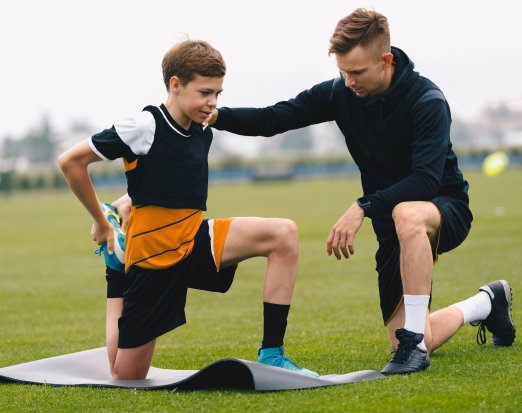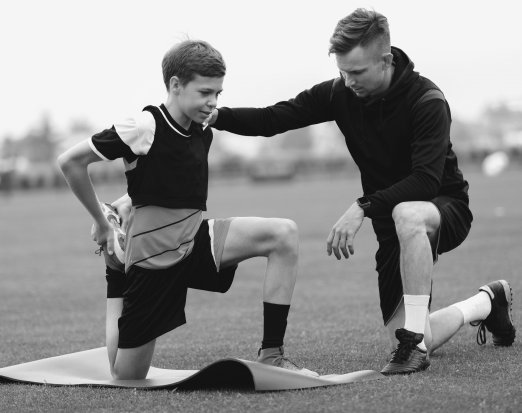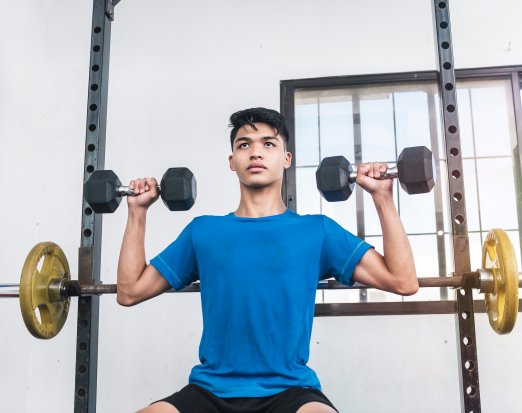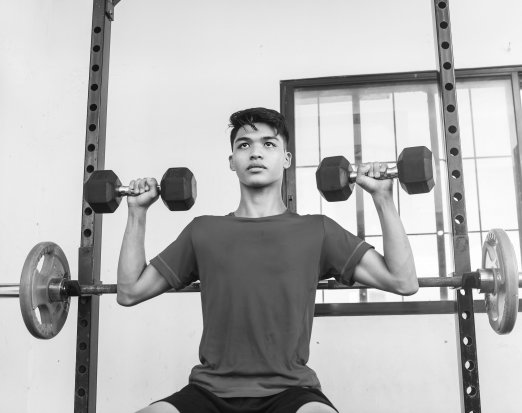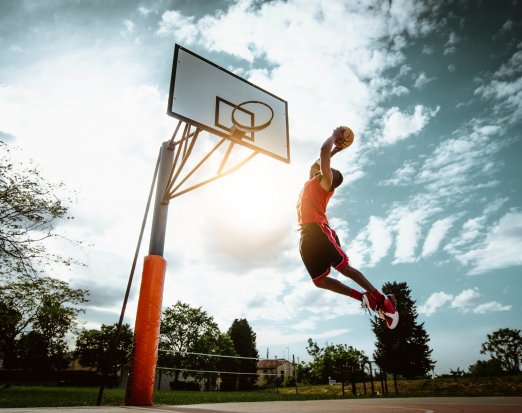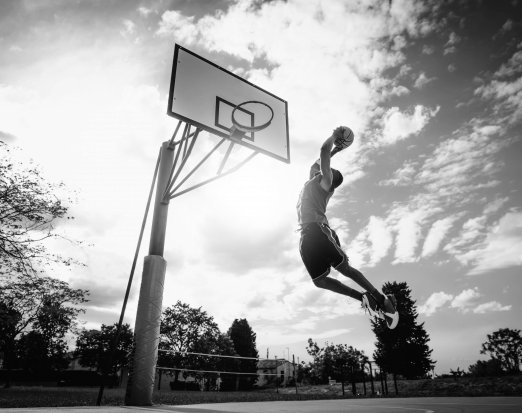Youth Agility Training
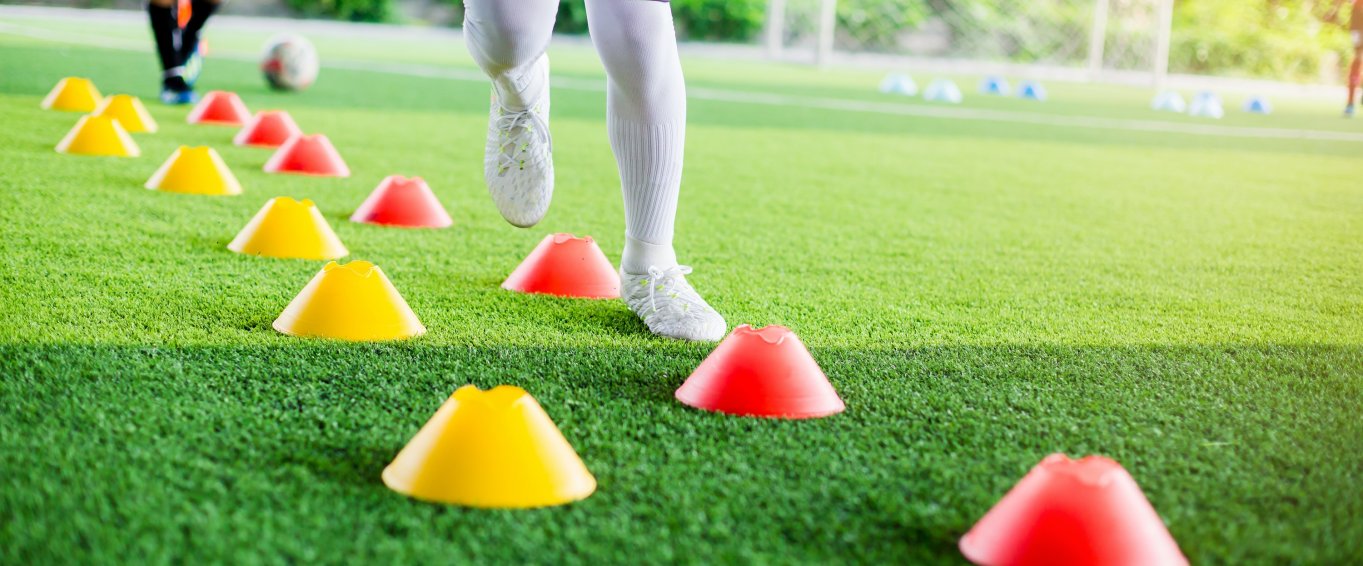
What is Agility?
It is frequently reported that youth athletes require a high level of agility to play and to perform in their sport, this is true for both individual and team sports (11).
From a youth development and sport performance perspective, agility has been widely researched (3, 8, 16). The term agility has led to some confusion in the literature, as many tests and assessments fall under the agility-change of direction, as these types of agility remove parts of the reactive and decision-making qualities. This can make agility difficult to both define and measure, as the environment and sporting context take centre stage (7).
This confusion has led to many alterations in the hunt to incorporate a comprehensive definition of agility. Sheppard and Young (13) states that agility is a rapid whole-body movement with a change of velocity or direction to a stimulus. Turner (18), further stated agility may be defined as the ability to change direction in response to a sport-specific stimulus, incorporating physical, technical, perceptual, and decision-making skills.
The first part of the definition refers to physical skills and movements at speed, with the latter part of the definition referring to or adding and reacting to a stimulus. Agility, therefore, can be viewed with two main sub-components, physical skills, and movements - change of speed, and a cognitive, decision-making quality to a specific stimulus (visual, reactive, anticipation).

Change of Direction with Speed - Closed Drills
Change of direction with speed (COD) are viewed as pre-planned closed drills, with little or low decision-making qualities, are often used in both training and testing. Various COD tests are available and have been used in the literature as a form of pre-and-post testing of agility to represent sporting physical characteristics and performance. For example, the T-Test in football (15), Illinois agility test in rugby league (6), and the 5-0-5 agility test in netball (17).
Cognitive, Reactive Drills – Open Drills
Cognitive (open drills) are more random, requiring reactive skills and decision-making qualities along with the physical movements at speed. This makes these types of agility drills extremely difficult to measure, as the task is normally in a sporting situation. Whereas the closed – change of direction drills are frequently measured by time, with a quicker time suggesting a better performance. Conversely, in open drills, the reaction and decision-making on selecting the optimal movement strategy, plus timing, may produce a higher performance.
These drills range from invasion-type games, relays, and reactive sprints, all can be placed into a sporting context. For example, football coaches regularly use small-sided football drills to develop a host of fitness-elements, with agility/decision-making being a high priority.
Start with Change of Direction and Build to Reactive Drills
From a youth and physical development, Llyod and Oliver (9), clearly states that agility should be trained throughout the different ages (pre-to-post peak height velocity), along with all the other physical capacities, strength, power, and speed.
Lloyd et al (10), suggested that agility training for youths should be skewed more towards COD and less reactive, as the young children can then concentrate on pre-planned drills, driving neuromuscular adaptations and motor skills, especially balance and coordination. Reactive agility training can still be delivered to the young athletes, as races and tag-games are fun, they also drive intent/high-effort but consider the training frequency and volume.
As the youths grow and develop, their training ratio can be adjusted, with more of an emphasis on reactive type agility training, which requires cognitive and decision-making elements. These reactive type drills can then be placed and positioned more towards a sporting-environment and context.
Training Strength, Power, and Speed to help with Agility
It is important to understand that training other physical capacities (strength, speed, and power) are correlated with developing COD. Young et al. (19) has suggested that reactive strength, COD training, and linear sprints should be prescribed to help with agility-COD improvements. In the same review, Young (19) highlighted that reactive strength and linear sprint training had a stronger correlation to improvements in agility than maximum strength training. The enhancement in agility performance from reactive strength training and linear sprints are probably from training the stretch-shortening cycle. You can read about the stretch-shortening cycle and plyometrics here.
Reactive strength (plyometrics) has been shown to have a high correlation with COD performances (14), due to the quickness of the drills and the utilisation of the stretch-shortening cycle.
Plyometric type drills are regularly prescribed to develop and improve the stretch-shortening cycle mechanism. Asadi et al. (2) investigated plyometric training and maturation and reported that adolescents completing two plyometric type sessions per week improved their COD. The changes in performance coincide with maturation, as adolescents have alterations in their tendons (change in stiffness) and muscle pre-activation strategies (12).
Furthermore, Eisenmann and Malina (4), reported a difference in neuromuscular performances in jumping and agility activities between males and females (ages 8 – 15 years old). The researchers reported a stagnation or plateau in female’s jumping and agility performances around the age of 13 years. This is an important consideration with young female athletes, especially concerning knee injuries (anterior cruciate ligament injuries are frequently reported (1)). Female athletes who demonstrate valgus knee positions when performing COD activities and cutting movements may need a block of strength training, as altered mechanics may place the athlete at a higher risk in developing knee injuries (5).
Summary
Agility is a complex concept, with two main sub-components. (a) - Change of direction with speed, which incorporates physical capacities, strength, reactive strength, power, and neuromuscular strategies. Also, motor skills, especially balance and coordination. (b) – Cognitive, decision-making, to a sport-specific stimulus, which includes reactive, visual, planning of movement strategies.
It is recommended that youth and young athletes should practice their agility training, but with more of an emphasis on closed COD, along with a variation of motor skills. Along with maturation, agility training can be moved through the spectrum from closed COD to more reactive-type agility, where adolescents can develop both the physical and decision-making skills.
Regular strength training and the development of reactive strength through plyometrics and sprint training are physical capacities that will aid agility performances. This emphasises the importance of a concurrent strength and conditioning programme for youth and adolescent athletes.
Youth Strength & Conditioning Platform for Schools, Sport Clubs, and Academies.
Our platform helps to deliver effective training and tracks athletic progress and development, with the core objectives of reducing the risk of injuries and to promote both sport readiness and performance. The platform’s features include -
- Strength and conditioning tests and dashboard to compare and contrast athlete metrics
- Athlete app - athletes can discover new exercises and train independently
- Track data - monitor athlete’s training loads, RPE, and training adherence
- Reports - simply create squad, team, and individual athlete reports
- Full curriculum - follow a strength and conditioning curriculum with a library of session plans
References
- Arendt, E.A., Agel, J., & Dick, R. (1999). Anterior cruciate ligament injury patterns among collegiate men and women. J Athl Train, 34(2), 86 – 92.
- Asadi, A., Arazi, H., Ramirez-Campillo, R., Moran, J., & Izquierdo, M. (2017). Influence of maturation stage on agility performance gains after plyometric training: A systemic review and meta-analysis. Journal of Strength and Conditioning Research, 31(9), 2609 – 2617.
- Dugdale, J.H., Sander, S., & Hunter, A.M. (2020). Reliability of change of direction and agility assessments in youth soccer players. Sports, 8, 1 – 11.
- Eisenmann, J.C., & Malina, R. (2003). Age and sex associated variation in neuromuscular capacities of adolescent distance runners. Journal of Sport Sciences, 21, 551 – 557.
- Ford, K.R., Myer, G.D., Toms, H.E., & Hewett, T. (2005). Gender differences in kinematics of unanticipated cutting in young athletes. Med Sci Sports Exerc, 37(1), 124 – 129.
- Gabbett, T.J. (2002). Physiological characteristic of junior and senior rugby league players. Br J Sports Med, 36, 334 – 339.
- Horicka, P., Hianik, J., & Simonek, J. (2014). The relationship between speed factors and agility in sport games. Journal of Human Sport and Exercise, 9(1), 49 – 57.
- Krolo, A., Gilic, B., Foretic, N., Pojskic, H., Hammami, R., Spasic, M., Uljevic, O., Veric, S., & Sekulic, D. (2020). Agility testing in youth football players; evaluating, reliability, validity, and correlates of newly developed testing protocols. International Journal of Environmental Research and Public Health, 17, 1 – 16.
- Lloyd, R.S., & Oliver, J.L. (2012). The youth physical development model. Strength and Conditioning Journal, 34(3), 61 – 71.
- Lloyd, R.S., Read, P., Oliver, J.L., Meyers, R.W., Nimphuis, S., & Jeffreys, I. (2013). Considerations for the Development of Agility During Childhood and Adolescence. Strength and Conditioning Journal, 35(3), 2 – 11.
- Mackala, K., Vodicar, J., Zvan, M., Krizaj, J., Stodolka, J., Rauter, S., & Coh, M. (2020). Evulation of the pre-planned and non-planned agility performance: comparison between individual and team sports.
- Radnor, J.M., Oliver, J.L., Waugh, C.M., Myer, G.D., Moore, I.S., & Lloyd, R.S. (2018). The influence of growth and maturation on stretch-shortening cycle function in the youth. Sports Med, 48, 57 – 71.
- Sheppard, J.M., & Young, W.B. (2006). Agility literature review: Classifications, training, and testing. Journals of Sports Sciences, 34(9), 919 – 932.
- Spiteri, T., Nimphius, S., Hart, N.H., Specos, C., Sheppard, J., & Newton, R.U. (2014). Contribution of strength characteristics to change of direction and agility performance in female basketball players. Journal of Strength and Conditioning Research, 28(9), 2415 - 2423.
- Sporis, G., Jukic, I., Milanovic, L., & Vucetic, V. (2010). Reliability and factorial validity of agility tests for soccer players. Journal of Strength and Conditioning Research, 24(3), 679 – 686.
- Thieschafer, L., & Bush, D. (2022). Development and trainability of agility in youth: a systematic review. Frontiers in Sports and Active living, 4, 1 – 23.
- Thomas, C., Ismail, K.T., Simposn, R., Comfort, P., Jones, P.A., & Dos’Santos, T. l (2019). Physical profiles of female academy netball players by position. Journal Strength and Conditioning, 33(6), 1601 – 1608.
- Turner, A. (2011). Defining, developing, and measuring agility. UK Strength & Conditioning Association, 22, 26 – 28.
- Young, W.B., Dawson, B., & Henry, G. (2015). Agility and change of direction are independent skills: Implications for training for agility in invasion sports. International Journal of Sports Science & Coaching, 10(1), 159 – 169.
